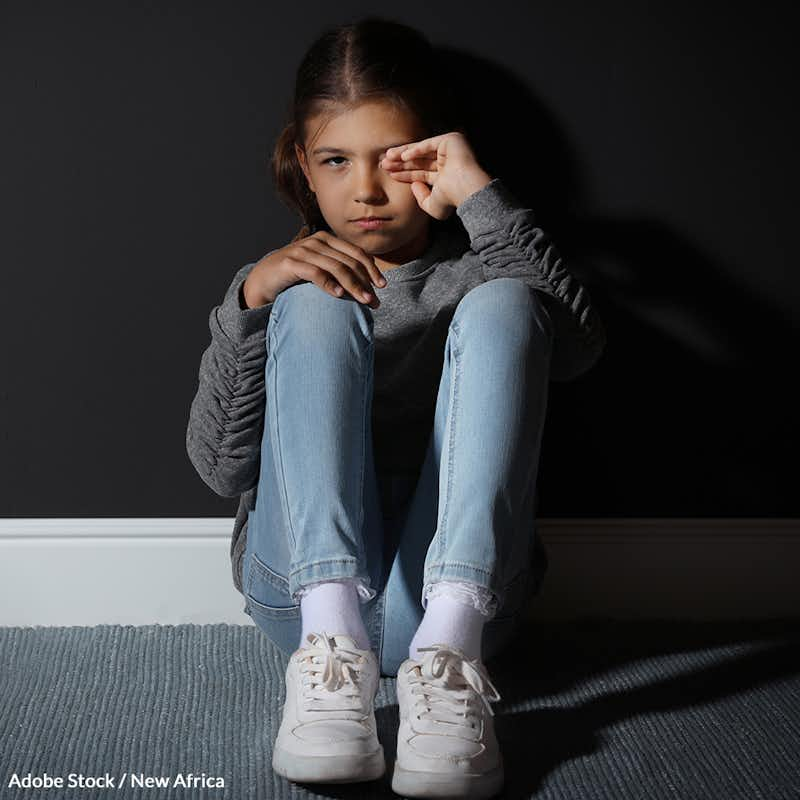End Seclusion And Restraint In School
9,202 signatures toward our 30,000 Goal
Sponsor: The Literacy Site
Seclusion and restraint are not effective methods of punishment, and often result in negative outcomes for all. Take a stand!

in some American schools, disabled children are still being physically punished by seclusion and restraint1.
These are severe punishments, both psychologically damaging and physically dangerous to children2.
The scenarios vary, but typically restraint and seclusion are used to try to control unwieldy behavior, often seen among disabled children.
There are other ways to work with children who have high support needs that don't involve tossing them in a dark room alone while they are extremely distressed (seclusion) or tying them down on a table (restraint)3. Physical punishment can be traumatic for both the children experiencing it and staff administering the punishment.
Further, according to the Office of Civil Rights, these methods of punishment are used disproportionately against marginalized people. While disabled students are only 13% of the population, they represent 80% of those who experience restraint. Black and Indigenous students and Students of Color also represent a disproportionate amount of the children experiencing restraint and seclusion4.
It is a misconception that secluding and restraining a student who is "acting out" will keep other students and staff safer. This is simply not true5.
Many if not most restraint and seclusion practices have been shown to be ineffectual at best, and sometimes fatal. A report from the federal Government Accountability Office (GAO) described multiple allegations of severe abuses in schools around the nation. These included a 5-year-old allegedly being tied to chairs with bungee cords and duct tape by a teacher and suffering broken arms and nosebleeds, the death of a 7-year-old after being held facedown for hours by school staff, and a 13-year-old reportedly hanging himself in a seclusion room after prolonged confinement6.
Even when children's lives are not at risk, research has shown that restraint and seclusion may inflict trauma on students7.
Conversely, programs that have reduced or eliminated seclusion and restraint have realized a number of positive outcomes including reduced youth and staff injuries, reduced staff turnover, higher staff satisfaction, reduced lengths of stay, sustained success in the community after discharge, and significant cost savings8.
The Keeping All Students Safe Act (KASSA)9 was introduced to end these practices in any school that receives federal funding. Sign the petition and take a stand for children!
- Robert Kim, Phi Delta Kappa International. (28 February 2022), "The restraint and seclusion of students with disabilities."
- Stop Hurting Kids, "Frequently Asked Questions."
- Alliance Against Seclusion and Restraint, "Compliance to compassion: Supporting students, teachers, and staff in challenging times."
- Civil Rights Data Collection, U.S. Department of Education | Office for Civil Rights (2017-2018), "The Use Of Restraint And Seclusion On Children With Disabilities In K-12 Schools."
- Jason H. Craig 1 & Kimberly L. Sanders, Advances in Neurodevelopmental Disorders (13 August 2018), "Evaluation of a Program Model for Minimizing Restraint and Seclusion."
- Gregory D. Kutz, Managing Director Forensic Audits and Special Investigations, United States Government Accountability Office (19 May 2009), "Selected Cases of Death and Abuse at Public and Private Schools and Treatment Centers."
- United States Senate Health, Education, Labor, And Pensions Committee (12 February 2014), "Dangerous Use of Seclusion and Restraints in Schools Remains Widespread and Difficult to Remedy: A Review of Ten Cases."
- Beth Tolley, Alliance Against Seclusion & Restraint (9 January 2021), "Elimination of restraint and seclusion in schools is not only possible, but it is also morally and ethically imperative."
- Sen. Christopher Murphy, 117th Congress (26 May 2021), "S.1858 - Keeping All Students Safe Act."
The Petition:
Dear Sen. Christopher Murphy and members of Congress,
While numerous studies have shown that physical punishment creates traumatic experiences for both the student and the administrator, children are still being physically punished by seclusion and restraint in schools.
Even when children's lives are not at risk, research has shown that restraint and seclusion may inflict trauma on students.
Some studies show that seclusion and restraint use leads to an increase in the behaviors that staff members are attempting to control or eliminate.
Many if not most restraint and seclusion practices have been shown to be ineffectual at best, and sometimes fatal. In one case, a 5-year-old was tied to chairs with bungee cords and duct tape by a teacher and suffered broken arms and nosebleeds as a result. A 7-year-old was killed after being held facedown for hours by school staff, and a 13-year-old reportedly hanged himself in a seclusion room after prolonged confinement.
In 2018, the NAACP, the Southern Poverty Law Center, and 56 other legal and social justice organizations issued a joint statement calling for a federal ban on the practice in public schools. Two Hundred ninety-five organizations have signed on to this statement as of July 1, 2020. Principle eight addresses the elimination of restraint, seclusion, and corporal punishment. "Creating a safe and inclusive school climate requires stopping counterproductive and overly harsh punishments, including corporal punishment and restraints and seclusion, which impact our most marginalized youth and lead to long-term behavioral and mental health impacts."
To the same end, I applaud your continued support of The Keeping All Students Safe Act (KASSA) and end the practices of seclusion and restraint in any school that receives federal funding.
Our children deserve to be safe in school, and passing KASSA will make that possible.
Sincerely,